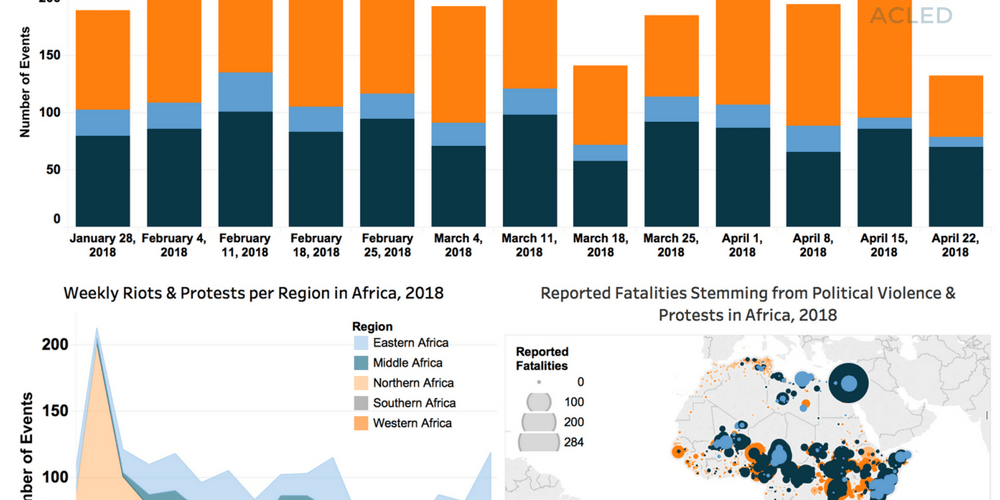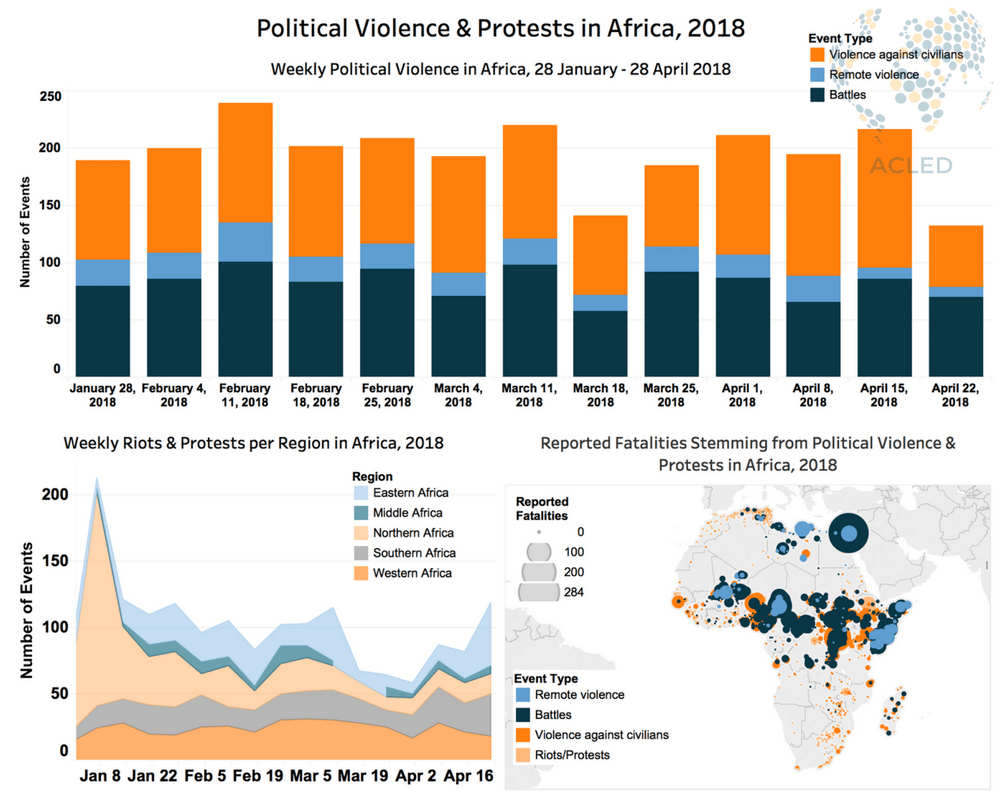Key trends in Africa on the week of April 22nd include the growing Ambazonian insurgency in Cameroon, the continued use of pro-government militias to counter rebellion in Sudan’s Darfur, and the repression against citizens’ resistance against bad governance practices across a number of contexts in Eastern and Southern Africa.
The Ambazonian separatists’ low-intensity insurgency in the Nord-Ouest and Sud-Ouest regions of Cameroon is growing. In April, the separatists have been involved in almost as many individual acts of political violence as Boko Haram (14 and 15 respectively). Through new modes of warfare, including the use of new weapons (landmines) and the increased targeting of civilians (through killings and kidnappings), they are emerging as an important destabilizing force in Cameroon. Most recently, the separatists assassinated two teachers on April 25th and 28th in Kumba and in Muyuka towns in Sud-Ouest. In Kumba, the state forces reacted quickly as they pursued and fought the separatists right after the attack.
In Sudan, an attack by the Sudan Liberation Movement/Army – Abdul Wahid al-Nur faction (SLM-AW) on camel herders in Tawa, around Jebel Marra on April 18th, led to a series of retaliatory attacks by the Sudanese state forces. The government’s Rapid Support Forces (RSF) clashed with the SLM-AW for three consecutive days between April 21st-23rd and attacked dozens of villages in the area, burning down and pillaging properties, and forcing the displacement of tens of thousands of people. Later that week, government forces also clashed with a relatively inactive breakaway faction of SLM-AW, the SLM-Transitional Council.
In Ethiopia, rare and large-scale protests erupted in the Somali region. The protests started in Shinile and Jijiga towns on 20th of April after the regional president (Abdi Iley) dismissed the Chairman of the Ethiopian Somali People Democratic Party in the ruling coalition government. The protests quickly expanded to other towns in the Siti and Fafan zones (including Hadew, Ayisha, Afdem, Biki, Erer, Shinile and Hadigale) as well as to Degeh Bur in the Jara zone. These denounced wider governance issues within the Iley administration, notably endemic nepotism and corruption. The authorities responded violently to the increasing risk of revolt in the Somali region, bringing in reinforcements from the Liyu forces stationed outside Jijiga town. Meanwhile in the Oromia region, repression continues with reports of unknown assailants breaking into people’s homes and beating them to death in rural areas of Dale Wabara woreda in Kelem Wellega zone since early April. So far, 12 people have been reported killed and more seriously injured.
There were also notable anti-government protests in other parts of the continent. In Madagascar, police violently repressed an opposition protest against new electoral laws in the capital on April 21st, causing at least two deaths. Protests calling for the resignation of the president, Hery Rajaonarimampianina, have been ongoing in the capital since and are set to continue. In Malawi, rare protests denouncing the alleged corruption and poor governance under president Peter Mutharika were organized on April 27th in Lilongwe, Karonga, Mruru and Zomba. Finally, in Tanzania, the political space continues to tighten. Ahead of a call for countrywide anti-government demonstrations on the country’s Union Day, on April 26th, police arrested seven people suspected of fueling the online campaign for the protests and warned against the demonstrations, pledging to beat protesters “like stray dogs”. The protests were effectively prevented as a result.
AfricaAnalysisBoko HaramCivilians At RiskConflict MonitoringCurrent HotspotsRemote ViolenceRioting And ProtestsViolence Against Civilians







